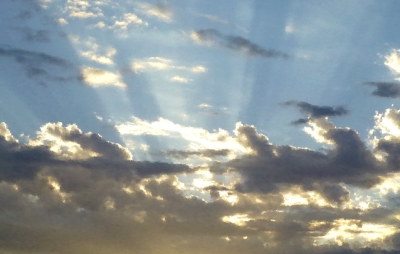
We usually see the Call as the beginning of a new life, but it also signals the death of our old life. It is the ending that allows the beginning, the death that stimulates rebirth.
The Call: Ringing Up the Curtain
In his seminal book on the hero’s journey, The Hero with a Thousand Faces (1949), mythologist Joseph Campbell described the first stage of the journey, the Call, writing that,
…the call rings up the curtain, always, on a mystery of transfiguration…which, when complete, amounts to a dying and a birth. The familiar life horizon has been outgrown; the old concepts, ideals, and emotional patterns no longer fit; the time for passing of a threshold is at hand (p. 51).
While Campbell’s book focuses on the spiritual or transcendent hero, his words have much to say about the journeys we take in our everyday lives.
Campbell recognized that the foundation of our experience and growth in the world is the process of transformation. Transformation begins, as Campbell writes, when we have outgrown our “familiar life horizon,” when the story we have become outgrows the story that we are living. One day we realize that our old ways of understanding and being no longer fit either the world that has evolved around us or the person that has evolved within us, and we are called to change.
The End that is the Beginning
At its essence, then, the Call signifies death and rebirth, the death of our old self or life and the rebirth of the new. The death of the old is a key aspect of the Call that is often overlooked. We tend to think of the Call only as a call to rebirth, toward a new journey, but the Call also signifies the end of a previous journey. In other words, the Call is the end that allows the beginning.
This is perhaps the most difficult aspect of the Call to comprehend: the Call is simultaneously the beginning and the end, and we must embrace both. In one of my favorite journey quotes, William Bridges expressed this concept eloquently:
Transition does not require that you reject or deny the importance of your old life, just that you let go of it. …honor the old life for all that it did for you. It got you this far. It brought you everything you have. But now—although it may be some time before you are comfortable actually doing so—it is time for you to let go of it. Your old life is over (2001, p. 16).

However, accepting that our old life is over is not always easy. The revelation the Call brings can be disorienting and threatening. It can challenge our self-concept, our sense of who we are in the world, or it can threaten the life and relationships that have provided security and stability. We are, often quite literally, shaken out of our life, forced in a sense to float outside, looking back as an observer, trying to understand what is happening.
Understanding, in this sense, is not to understand the facts of the Call—that is usually impossible from the vantage point of someone caught up in the adventure. Understanding the Call is more like trying to orient ourselves to the changed situation. We try to make some sense of what is happening and who we are becoming. In explicating that story, as we sort through the confusion of our disrupted “former” life, we will begin to see the possibilities open to us in our “future” life, the life that is unfolding.
Even if we feel wounded or injured by the experience, the Call can reveal the road to healing. In The Search for the Beloved (1987), Dr. Jean Houston describes the call as a “wounding” and explains that we must “die to one story to be reborn to a larger one…[the story] revealed by the wounding” (p. 104). We must answer the question, “‘What or who is trying to be born in you from that wound’ (p. 108).
The Self within the Self

Often the first step to discovering the self that is unfolding is to discover the self that is. This means taking a careful look at who we are beneath the roles, defenses and facades we have built over the years as we tried to cope with life. In Awakening the Hero Within, Dr. Carol Pearson writes,
Always the call is to function at a higher or deeper level, to find a way to live that has more significance and depth, to find out who you are beyond the social persona that you and your environment have jointly created (1991, p. 126).
In other words, before we can become someone new and realize the potentials awaiting us, we must first become who we really are—not the persona we present to others or to ourselves—but who we really are (see “Gestalt’s Paradoxical Theory of Change”).
This process is challenging and painful, and it often requires the help of close friends, family or a professional mentor. However, only when we are grounded in the reality of who we are will we be ready to answer the Call and to explore and unfold the potentials of who we can become.
References
Bridges, W. (2001). The way of transition. Cambridge, Massachusetts: Perseus Publishing.
Campbell, J. (1949). The hero with a thousand faces (2nd ed.). Princeton, NJ: Princeton University.
Houston, J. (1987). The Search for the Beloved. NY: Jeremy P. Tarcher/Putnam.
Pearson,C. (1991). Awakening the Heroes Within. NY: HarperCollins.
Copyright © 2014 by Reg Harris. All rights reserved. Apart from properly cited quotations and short excerpts, reproduction of this article in any form, in part or in whole, without the expressed written permission of the author is strictly prohibited. Posting this article or any part thereof to the Internet in any form without the expressed written permission of the author is a violation of the Digital Millennium Copyright Act and strictly prohibited. For permission to use, contact Reg Harris.